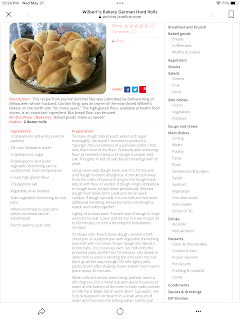Well hello again!
It's been a while! While I have been gone I have been dealing with some medical issues. For one, I have developed diabetes, mainly due to my being overweight. This did not come as a huge surprise since diabetes runs in my family and I suppose it was only a matter of time.
I have adopted a low carbohydrate lifestyle and in three months time I have lost nearly 25 pounds and have my diabetes under control enough that I no longer need to take my medications, PROVIDED I continue to follow my low carb lifestyle.
Yes folks, sugar really is the enemy. As you may, or may not be aware, carbohydrates are made from long chains of simple sugars like glucose, so every time you eat bread, pasta, rice or potatoes you are eating sugar. This can wreak havoc on your blood glucose. If you are a foodie like me, this can create quite a dilemma.
Luckily the answer lies in creative cooking with other ingredients that are naturally low in carbs. Things like the cauliflower in this dish make an excellent substitute for macaroni. I have made pizza crust and risotto and "mashed potatoes" all with amazingly versatile cauliflower.
The other good news is that we are beginning to understand that fat is not necessarily the enemy we once thought it was. This is not to say that you should sit down and consume a pound of butter, but that fat can be used to enhance the flavor and texture of low carb foods in a way that makes a low carb lifestyle not only doable, but, dare I say it, enjoyable!
As an added bonus, since gluten-free cooking and the paleo diet craze are so popular, low carb substitutes are easy to find in most grocery stores and the internet is chock full of recipes from folks like me thinking outside the culinary box.
The key to this lifestyle is to keep things in perspective and enjoy indulgent dishes like this in moderation. Do I eat this every week? No! But when the craving for mac-n-cheese comes knocking,why not enjoy a much healthier alternative! Learn to read nutrition labels on everything you buy, it's amazing how many hidden carbohydrates are in the food we eat, especially processed foods.
I have decided to reimagine many of my most popular recipes and the result has been delicious. Even picky eaters and vegetable haters love this rendition of Mama Ozzy's decadent cheesy baked pasta goodness.
This recipe is a compilation of the best tips and tricks I could find on the internet combined with Mama Ozzy's sensibilities for flavor! I hope you will try this terrific dish, healthy comfort food at it's finest!
Mama Ozzy's Smoked Gouda Cauliflower and Cheese
Serves 8
1 large head cauliflower, green parts removed and cut into small chunks
15 oz. ricotta cheese
8 oz. sour cream
1/2 cup heavy cream
1 egg
3/4 tsp salt
1/2 tsp turmeric powder
1/2 tsp dry mustard
1/4 tsp ground nutmeg
1/4 tsp garlic powder
1/4 tsp smoked paprika
1/8 tsp cayenne pepper
8 oz shredded smoked Gouda cheese
16 oz shredded extra sharp cheddar cheese (reserve 1/2 cup for topping)
1/2 cup grated parmesan cheese
3 slices fried bacon, crumbled
1cup crushed fried pork rinds (chicharrones)
Place chopped cauliflower in a large glass bowl, cover with plastic wrap, and microwave on high power for 10 minutes. Let cauliflower rest, still covered, for 30 minutes to cool down.
Chop the cauliflower into small chunks, stems and all.
You should get about 8 cups of chopped cauliflower.
After microwaving, let the cauliflower steam for thirty minutes. The plastic wrap will shrink down to create a cool tight seal!
Pre heat oven to 350 F.
Empty the cauliflower into a clean cloth dish towel ( it will still be pretty hot) and carefully squeeze out as much liquid as possible.
After thirty minutes dump the cauliflower on a clean dish towel.
Twist the towel tightly over the sink to remove as much water as possible.
In another large bowl combine ricotta, sour cream, cream, egg, spices.
Add all the cheeses and mix to combine.
Finally, add the squeezed cauliflower and fold until well blended. Place in a 8x11 glass baking pan ( no need to grease).
Top with reserved cheese, crumbled bacon and pork rinds.
Bake 45 minutes until bubbly and golden. Allow to rest for 15 minutes before serving.




















